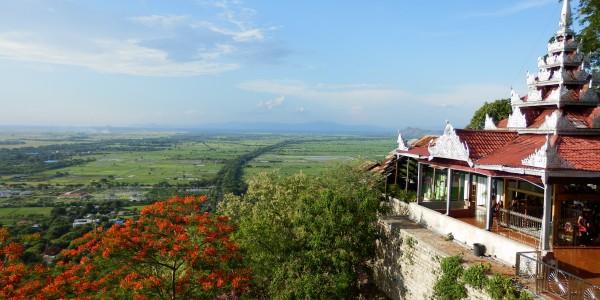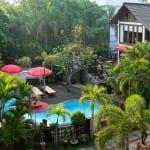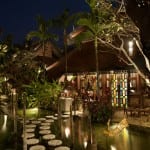Located on the banks of the Irrawaddy River, Mandalay is the country’s second largest city and is a bustling, modern economic hub and although most of the key attractions lie outside of the city, it still boasts an interesting history dating back to when it was Myanmar’s old capital.
Mandalay
Why visit Mandalay ?
- Explore the many monuments on Mandalay’s sacred hill
- Watch Mandalay’s gold leaf bashers at work
- Cycle to U Bein bridge
- Try some tasty delicacies including Myanmar pancakes, samosa, and Shan noodles
- Rise early to give alms to the monks
Within Mandalay, highlights include the Kuthodaw Pagoda, known as the world’s largest book, consisting of 729 marble slabs engraved with Buddhist scriptures. Although quite a walk to the top, Mandalay Hill offers wonderful views out across the city and the river and with the temple at the top, it is well worth the effort. The Mahamuni Pagoda has a spectacular Buddha image covered with thick layers of gold leaf,; whilst the Shwenandaw Kyaung (Golden Monastery) is a superb example of a traditional wooden building and has some exquisite woodcarvings. Mandalay is also famous for its arts & crafts and is a good place to buy wood carvings, hand woven fabrics and traditional puppets.
Amarapura to the south of Mandalay is home to the beautiful 150-year-old U Bein teak bridge, which was built in 1851 at the time when Amarapura was the royal capital. It is the world’s longest teak bridge and built by staking 1060 teak posts over the wide Taungthaman Lake to connect two villages. For those interested in Buddhism, a visit to the nearby Mahagandayone Monastery where more than a thousand monks and novices live and study the doctrine of Buddha is a fascinating site especially at meals time.
Mingun is home to the world’s largest uncracked bell which was commissioned by King Bodawpaya in 1808 and is reached by an gentle boat journey along the Ayeyarwady.
The peaceful riverside town of Sagaing, once a former capital of an autonomous Shan kingdom, is a hugely important centre for Buddhism with huge numbers of white and gold stupas as well as numerous monasteries and nunneries scattered all over the hill. It is home to many thousands of monks and nuns and is a place whether other Buddhists can visit to meditate. The area is also well known for its many silversmiths who work here.
LOCATION
MYANMAR KEY INFO
A visa is required for UK passport holders.
Health Requirements
No mandatory vaccinations are required. Yellow Fever required if arriving from an endemic area
Time Difference
GMT +6 ½ hours
Flight Time
12 hours with one stop
NEWSLETTER SIGNUP
Keep up-to-date with the latest travel trends, inspiration for future trips and competitions to win luxury travel vouchers.
Subscribe











![_u_bein_bridge_in_amarapura[1] _u_bein_bridge_in_amarapura[1]](https://world-odyssey.com/wp-content/uploads/2017/01/u_bein_bridge_in_amarapura1-600x300.jpg)
![mandalay_palace,_myanmar[1] mandalay_palace,_myanmar[1]](https://world-odyssey.com/wp-content/uploads/2017/01/mandalay_palace_myanmar1-600x300.jpg)







